The major may earn up to an 80% interest in the property by spending $12 million on exploration over a six-year period and making cash payments of $125,000. Once Rio Tinto earns a 51% interest in Firebird, it may choose to
form a joint venture with ALX, or move forward with its right to earn
an 80% stake. Firebird covers 205 sq. km and hosts a magmatic sulphide mineralizing system. Exploration at the site dates back to 1929, with
three historic nickel-copper-cobalt deposits. ALX first acquired the
claims in May 2019. The property is 18 km from Stony Rapids and is
connected to the highway system.
In April, ALX released the results of a three-hole drill program at the
site. Two of the holes hit nickelbearing sulphide mineralization: intercepts included 24 metres of 0.36% nickel, 0.09% copper and 0.01% cobalt as well as 1 metre of 0.07% nickel, 0.08% copper and 0.02% cobalt. There are other geophysical anomalies at the site with potential for magmatic sulphide mineralization, and Rio Tinto plans to complete an airborne geophysical survey over the 80-sq.-km northern part of Firebird.
Also in northern Saskatchewan, ALX holds a 100% interest in the
276-sq.-km Flying Vee project, 20 km to the north of Stony Rapids.
In July, the company completed a prospecting and sampling program
at Flying Vee. Results include up to 8.34 grams gold per tonne from the
Day Lake gold showing. In addition, ALX holds the 62.3-sq.-km Sceptre gold project in Saskatchewan, the Vixen gold properties in Ontario, as well as the
59.6-sq.-km Draco volcanogenic massive sulphide asset in Norway.
ALX Resources has a C$10.6-million market capitalization.
Baseload Energy

Baselode Energy (TSXV: FIND) is a Saskatchewan-focused uranium
explorer, where it holds the Shadow and Hook properties. As part of its
exploration strategy, Baselode is targeting near-surface, high-grade
basement-hosted uranium deposits, which, according to the company, can be put into production at lower costs and within shorter timeframes than Athabasca sandstone and unconformity uranium resources.
In June, Baselode acquired a 100% interest in the 460-sq.- km Shadow property, which lies south of northern Saskatchewan’s Athabasca Basin, along the Virgin River shear zone. According to the company, this site is prospective for basement-hosted uranium mineralization. The shear zone hosts several uranium deposits, and is one of the largest such trends in the northern part of the province. Baselode suggests structural similarities between Shadow and NexGen Energy’s (TSX: NXE; NYSE: NXE) Arrow, as well as Cameco’s (TSX: CCO; NYSE: CCJ) Eagle Point, both of which are high-grade, basement-hosted uranium deposits.
By August, Baselode completed a property-wide airborne geophysical survey at Shadow. According to James Sykes, Baselode’s president and chief executive, the survey “outlined an extensive structural network, which shares geophysical similarities with other
By August, Baselode completed a property-wide airborne geophysical survey at Shadow. According to James Sykes, Baselode’s president and chief executive, the survey “outlined an extensive structural network, which shares geophysical similarities with other high-grade uranium deposits, such as NexGen’s Arrow and Cameco’s Key Lake deposits.”
In July, the company also acquired a 100% stake in the 300-sq.-km Hook uranium property in the Athabasca Basin area. Hook encompasses basement rocks that are next to the southeast edge of the basin, within the Wollaston Domain, and is within 60 km of the Key Lake mill, owned by Cameco, and Orano, a French government-owned nuclear and renewable energy group. The Wollaston group hosts several high-grade uranium deposits. Baselode plans to assess the historical data available on this property to determine the next steps.
Sykes, a geologist, discovered the Arrow deposit and played a key role in the discovery of the basement-hosted Roughrider deposit, now held by Rio Tinto (NYSE: RIO; LSE: RIO). Baselode started trading on the TSX Venture Exchange in June. In September, the company announced a $1.2-million non-brokered private placement financing. With the proceeds, the company plans to complete additional gravity surveys over high-priority target areas and start
an initial diamond drill program at Shadow, testing the targets defined through geophysics. The company is part of the Stephen Stewart-led Ore Group, which also includes Mistango River Resources (CNSX: MIS) and Orefinders Resources (TSXV: ORX). Baselode Energy has a C$10.9-million market capitalization.
Denison Mines
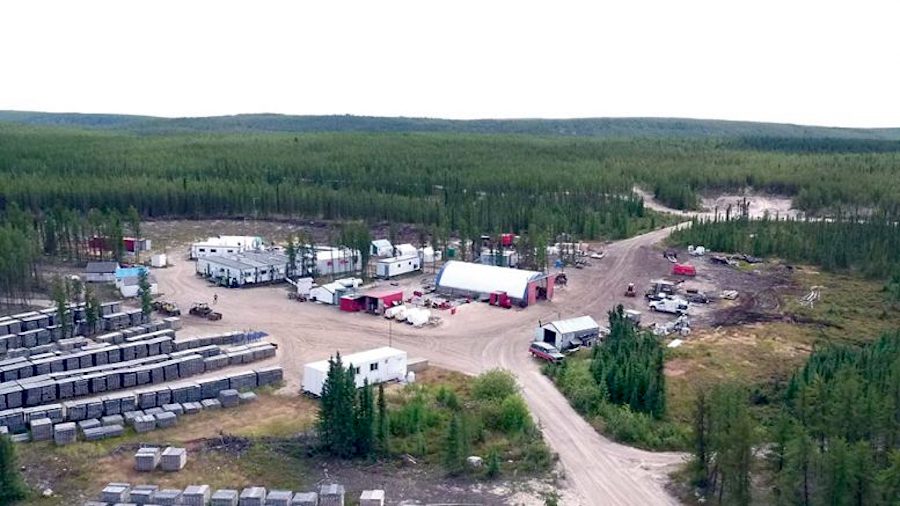
Denison Mines (TSX: DML; NYSE: DNN) is a uranium explorer and
developer with assets in the Atha- basca Basin. The company’s flagship, 90%- owned Wheeler River project is 35 km northeast of the Key Lake mill and includes two high-grade ura- nium deposits: Phoenix and Gryphon. Probable reserves across the two total 109.4 million lb. uranium oxide. Phoenix features 141,000 tonnes, at 19.1% uranium oxide, for a total of 59.7 million lb. uranium oxide.
A September 2018 prefeasibility study outlined an in-situ mining operation at Phoenix with underground mining planned for Gryphon. Upfront capital costs of $322.5 million were estimated for Phoenix, with production averaging 6 million lb. U3O8 at expected all-in operating costs (AISCs) around $11.57 per pound. Plans include a mine at the Phoenix deposit, followed by a potential second operation at Gryphon.
In-situ recovery test work is ongoing at Phoenix. This year, the work is focused on validating the company’s hydrogeologic model for the deposit and setting the groundwork for further field tests as Denison looks toward a future feasibility study.
In June, Denison announced that the hydrogeologic model established for Phoenix allows it to simulate an in-situ wellfield, which, according to a third-party engineering firm, established ‘proof of concept’ for use of in-situ mining at Phoenix.
The company also holds a 22.5% interest in the McClean Lake uranium project (70% held by Orano Canada, and 7.5% owned by Japan- based OURD), which includes a plant licensed for production of 24 million lb. U3O8 annually. At the end of July, Denison announced that, based on encouraging results from an internal study on an in-situ operation at the J-zone uranium deposit within its 66.71%-held Waterbury Lake property in northern Saskatchewan, it has started a preliminary economic estimate (PEA) on the development, which is expected in the second half of 2020.
Denison also holds a 25.17% stake in the Midwest project, 25 km from the McClean Lake mill, which features the Midwest uranium deposits.
Denison Mines has a C$388.2-million market capitalization.
Fjordland Exploration
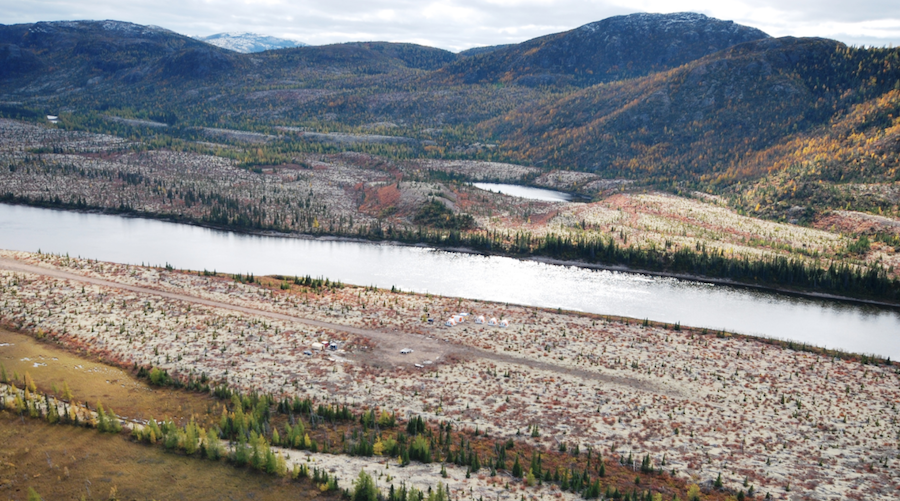
Fjordland Exploration (TSXV: FEX) holds interests in the Thomp- son Nickel Belt and South Voisey’s Bay projects in Manitoba and Labrador.
In May, Fjordland entered into an option agreement with CanAlaska Uranium (TSXV: CVV) to earn up to an 80% interest in CanAlaska’s wholly owned North Thompson nickel project. To earn the maximum stake, Fjordland would need to pay CanAlaska $150,000, spend $9 million on exploration and issue a total of 8.5 million shares over a six-year period.
A joint venture agreement includes options for Fjordland at each stage of the earn-in, and Fjordland may choose to form a joint venture at each stage. If the company earns a minimum 70% interest, and a feasibility study suggests a net present value, at an 8% discount rate, of over $100 million, the junior would need to issue an additional 10 million of its shares to CanAlaska.
North Thompson is 25 km from the city of Thompson and covers extensions of the Thompson nickel belt, which, according to the company, is the fifth-largest nickel sulfide belt worldwide, based on contained nickel. The project covers 187 square kilometres. A geophysical survey completed over the claims in 2007 outlined several drill targets. The data is being reprocessed, and results to date suggest targets within the Strong block. In Labrador, Fjordland may earn up to a 100% interest in the South Voisey’s Bay project, 80 km south of Vale’s (NYSE: VALE) Voisey’s Bay nickel-copper-cobalt mine. In August 2017, Fjordland entered into an agreement with privately- owned High Power Exploration, with the latter funding the exploration commitments in exchange for a 65% interest in the property. Rob- ert Friedland-led High Power also has a 31% interest in Fjordland.
South Voisey’s Bay covers 294 sq. km and includes gabbroic rocks within the Pants Lake mafic intrusive complex (PLI). According to Fjordland, the PLI is analogous to the mafic units in Voisey’s Bay mine area, based on similarities in geological settings, age, petrology and geochemistry.
Fjordland Exploration has a C$5.9-million market capitalization.
IsoEnergy
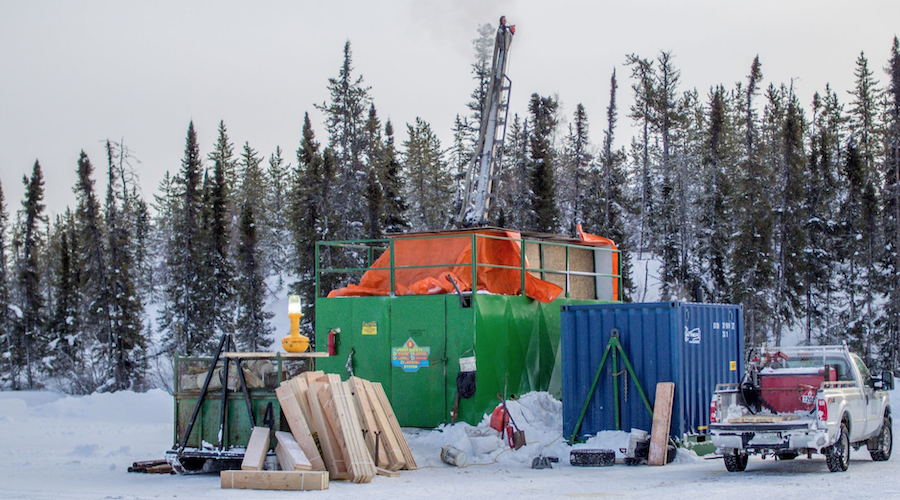
IsoEnergy (TSXV: ISO) holds 15 properties in the eastern Athabasca Basin.
Wholly-owned Laroque East covers 83.7 sq. km and lies within 35 km of Orano Canada’s McClean Lake mine and mill. This property covers a 15-km extension of the Larocque Lake conductor system, associated with several occurrences of uranium mineralization. One of these is the Hurricane zone, discovered in 2018.
In September, IsoEnergy announced intersections with “strong uranium mineralization” from the first holes of this summer’s drill campaign at Hurricane. One hole hit 9 metres of mineralization, which registered over 500 counts per second (CPS) starting at 329 metres, while another returned 10 metres of over 500 CPS from 344 metres. Both of these included higher-count intervals, and chemical assay results are pending.
To date, Hurricane has been traced over 575 metres of strike and 40 metres of width, while the zone is up to 11 metres thick and remains open. The best intersection to date from this zone, reported in Febru- ary, is 9 metres of 33.9% U3O8. The mineralization is on a major basement fault system, in the unconformity below the Athabasca, at a depth of 330 metres.
In August, the company started an 8,000-metre drill program at Hurricane. There are over 15 km of conductors associated with the Larocque Trend at Larocque East, and the company has only drilled the westernmost 2 kilometres.
IsoEnergy also holds the drill- ready Geiger project, with a total of 135 km of graphitic conductors; the Ratio property, 2 km east of Rio Tinto’s Roughrider deposit; and the Thorburn Lake project, traversed by the haul road to Cameco’s 50%- held Cigar Lake mine.
In August, IsoEnergy closed a $6-million private placement of a convertible debenture with Queen’s Road Capital, a venture capital firm. Also in August, the company closed a $4-million non- brokered private placement.
IsoEnergy has a C$106.6-million market capitalization.
Murchison Minerals
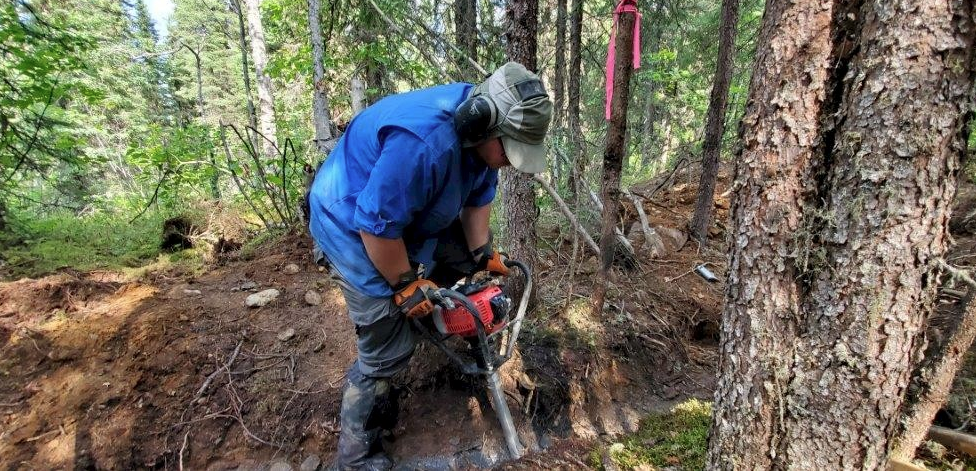
Murchison Minerals’ (TSXV: MUR) most advanced asset is the 627-sq.-km Brabant Lake property in Saskatchewan, 175 km northeast of La Ronge. The site includes a high-grade zinc-copper-silver deposit, and geophysical conductors along 57 km of strike. The wholly owned project is road-accessible and connected to the local power grid, and includes the Brabant-McKenzie volcanogenic massive sulphide (VMS) deposit.
Brabant-McKenzie features an indicated resource of 2.1 million tonnes, at 7.08% zinc, 0.69% copper, 0.49% lead, 0.23 gram gold and 39.6 grams silver per tonne (9.98% zinc-equivalent) and an inferred resource of 7.6 million tonnes, at 4.46% zinc, 0.57% copper, 0.19% lead, 0.1 gram gold per tonne and 18.42 grams silver per tonne (6.29% zinc-equivalent). This deposit remains open.
In March, Murchison completed a 949-line-km airborne geophysical survey over its claims in Saskatchewan, and identified a total of 58 new conductors.
At the end of March, the company announced a new discovery at the Main Lake target, 10 km from the VMS deposit, where a drill hole returned two mineralized intercepts. The first, more copper-rich, assayed 0.83% copper, 0.61% zinc and 11.8 grams silver over 4 metres starting at 140 metres, while the second, returned 7 metres of 1.62% zinc, 0.09% copper and 41.1 grams silver from 170 metres.
In July, Murchison announced that it had started this summer’s exploration work at Brabant Lake, focused on prospecting the new geophysical anomalies.
In Quebec, the company holds a 100% interest in the 58-sq.-km HPM nickel-copper-cobalt project, 135 km to the south of Fermont. There are several known nickel-copper-cobalt occurrences at the site.
In August, Murchison announced that it retained geological firm Orix Geoscience to complete ground prospecting on targets at HPM (there are over 24 geophysical targets at the site) and also arranged for a 1,400-line-km airborne geophysical survey. Past exploration at the project was focused on two areas of mineralization – PYC and Barre de Fer – with 25 holes completed at the latter. A hole drilled in 2008 into Barre de Fer returned high-grade intervals of nickel, copper and cobalt, including 43 metres of 1.74% nickel, 0.9% copper and 0.1% cobalt. The Barre de Fer conductor covers over 550 metres of strike. Nickel-copper exploration in the area dates back to the 1960s.
Murchison Minerals has a $C7.5-million market capitalization.
QMC Quantum Minerals

QMC Quantum Minerals (TSXV: QMC) is focused on mineral projects in Manitoba, where it holds three properties: the flagship Irgon lithium mine project in the southeastern part of the province, as well as the Namew Lake and Rocky Lake projects in the Flin Flon and Snow Lake regions.
Irgon is within 20 km of the Tanco lithium mine, sold to Sinomine Resources, a Chinese publicly traded company last year. The wholly owned project covers 46 sq. km and features several occurrences of granitic pegmatite. One of these is known as the former Irgon mine, while the largest spodumene-bearing dike is dubbed the Irgon dike. A provincial highway cuts across the property, which is 150 km northeast of Winnipeg.
The Irgon dike is exposed over approximately 800 metres of strike, with widths between three metres and 18 metres. In the 1950s, the Lithium Corporation of Canada, reported a historical resource estimate for the structure of 1.2 million tons, at 1.51% lithium oxide, contained within 365 metres of strike, and extending down to a depth of 213 metres. A 500-ton-per-day mining plant was established at the site, in addition to a shaft, down to a depth of 74 metres, and 366 metres of underground development. Work was suspended in 1957, due to lithium market conditions.
In April, QMC announced that it was in discussions with the Sinomine group, on the potential processing of spodumene (a lithium-bearing mineral) from the Irgon property at the Tanco plant. According to QMC, this processing route would eliminate the need for a concentrator during future mining at Irgon.
Last year, the company shipped spodumene samples from the Irgon project to China-based Guangxi, for testing and to produce a 6% battery-grade lithium oxide concentrate, as part of a non-disclosure agreement.
QMC also holds the 35-sq.-km Rocky Lake project in Manitoba, which includes volcanogenic massive sulphide mineralization at the Rocky Lake target. A hole completed in 2012 hit massive sulphides at a vertical depth of 171 metres, returning “highly significant” copper values within a nine-metre long interval that averaged 18% to 20% iron sulphides.
The company’s 190-sq.-km Namew Lake gold project is adjacent to Rocky Lake and includes 41 geophysical targets. Drilling completed in 2012 hit anomalous copper and zinc values with iron sulphides.
QMC Quantum Minerals has a $10.3-million market capitalization.
Rockcliff Metals
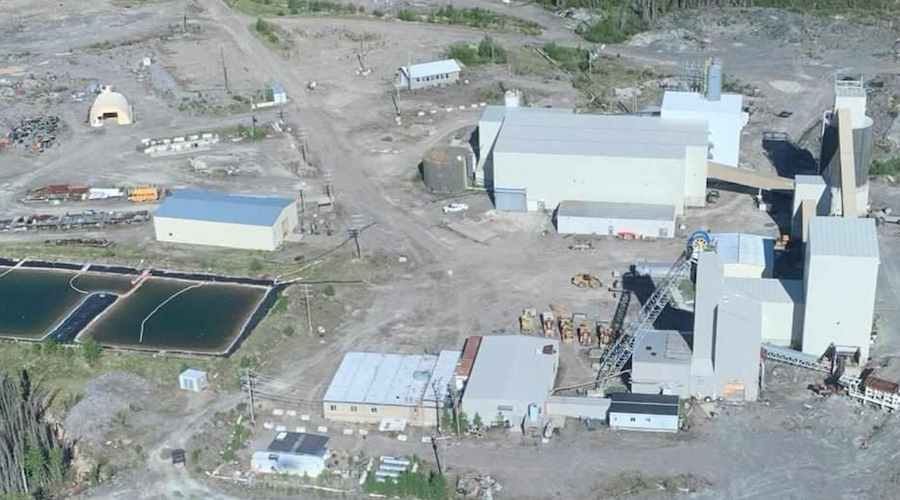
Rockcliff Metals (CSE: RCLF) has interests in three mineral properties in the Snow Lake area of central Manitoba, within the Flin Flon-Snow Lake greenstone belt, which are within trucking distance of a leased mill and tailings facility.
In August, Rockcliff announced that Hudbay Minerals (TSX: HBM) exercised its right to acquire an additional 2% stake in the Talbot project, giving it a 51% stake in the asset (Rockcliff owns 49%) – Hudbay is now the operator of the project. If the miner advances Talbot to production, Rockcliff will maintain a minimum carried interest of 35% over the life of the mine, as long as it contributes its share of the pre-construction capital.
Talbot, 160 km from the leased Bucko mill, hosts an indicated resource of 2.2 million tonnes grading 2.3% copper, 2.1 grams gold per tonne, 1.8% zinc, 36 grams silver per tonne (4.4% copper-equivalent), and an inferred resource of 2.4 million tonnes grading 1.1% copper, 1.9 grams gold, 1.7% zinc and 25.8 grams silver (3% copper-equivalent).
The wholly owned Rail property, 185 km from the mill, features indicated resources of 1.2 million tonnes averaging 2.73% copper, 0.8 gram gold, 0.9% zinc and 8.9 grams silver (3.5% copper-equivalent), and 700,000 inferred tonnes at 3.11% copper, 1.11 grams gold, 0.7% zinc and 8.5 grams silver (4.1% copper-equivalent). The copper deposit lies within the 5-km Rail copper horizon, with drill-ready geophysical anomalies.
Rockcliff’s wholly owned Tower project, 130 km from Bucko, covers 95 sq. km and includes a copper deposit. The indicated resources stand at 1 million tonnes grading 4.69% copper, 1.32% zinc, 0.85 gram gold and 23.7 grams silver (5.74% copper-equivalent), with a further 400,000 inferred tonnes, at 3.53% copper, 1.05% zinc, 0.57 gram gold and 18 grams silver (4.29% copper-equivalent). The resource is part of a 12-km corridor.
On the exploration front, Rockcliff plans to drill 70,000 metres this year. In May, the company announced drill results from the wholly owned Freebeth property, 125 km from the leased mill. Drill highlights include 2 metres 5.28% copper-equivalent and 8 metres 2.79% copper-equivalent.
April’s results from Tower also suggest a new, high-grade nickel-platinum group element (PGE) discovery – dubbed TGR – 600 metres south of the Tower deposit, associated with rocks from the Thompson nickel belt. The discovery hole hit 2 metres of 2.53% nickel, 3.08 grams palladium and 1.04 grams platinum (3.82% nickel-equivalent).
In May, Rockcliff announced the results of ore sorting test work on the Tower and Rail deposits, which, according to the company, suggest good potential to upgrade the material.
In April, the junior started a preliminary economic assessment on a combined sequential development of the Tower and Rail properties, expected to be completed this quarter.
Rockcliff has a C$29.2-million market capitalization.
(This article first appeared in the September 28–October 11, 2020 edition of The Northern Miner)




